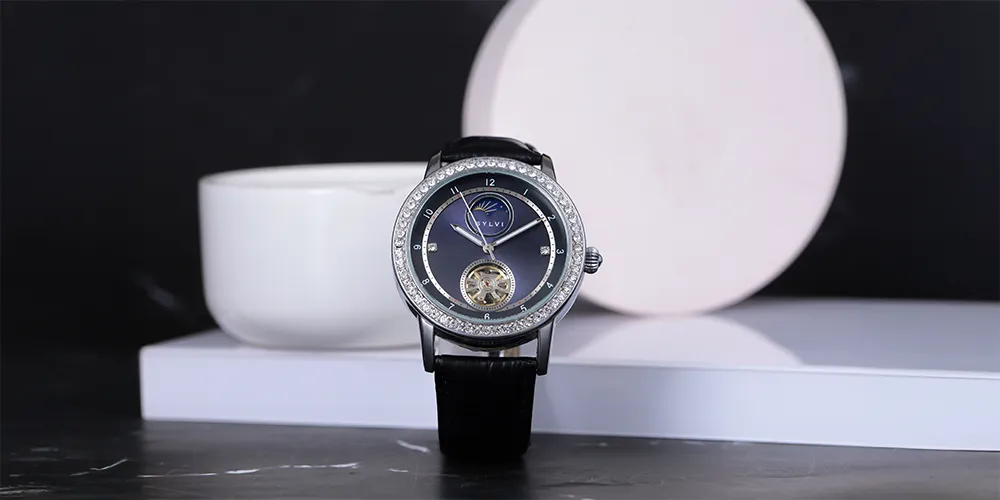In today’s digital world, where most of us rely on smartphones and smartwatches to check the time, there’s something incredibly fascinating about an automatic mechanical watches. These timepieces don’t need batteries, and they don’t rely on technology—they’re powered by something much more elegant: motion and mechanical precision.
Whether you're a budding watch enthusiast or just curious about how these ticking marvels work, this guide will walk you through the basics of automatic mechanical watches in simple terms. Let’s dive into the world where craftsmanship meets functionality.
What is an Automatic Mechanical Watch?
An automatic mechanical watch, often simply called an automatic watch, is a type of timepiece that uses a complex system of gears, springs, and rotors to keep time. Unlike quartz watches, which use batteries and electronic circuits, automatic watches are powered by the motion of your wrist.
In short: It winds itself as you wear it. The energy generated from your daily wrist movements keeps the watch ticking. If you don’t wear it for a while, it might stop—but we’ll explain that later.
The Heart of the Watch: The Movement
At the center of every automatic watch is its movement—the engine that drives the hands and keeps time. Movements are either manual or automatic. Both are mechanical, but the key difference is how they’re wound.
-
Manual Movement: You must wind it by hand regularly.
-
Automatic Movement: It winds itself using your wrist motion.
Automatic watches still have a spring-driven mechanism, but with an added rotor (we’ll talk about that soon).
Key Components of an Automatic Mechanical Watch
Understanding the following parts will help you grasp how the magic happens inside an automatic watch:
1. Mainspring
This is the power source of the watch. The mainspring is a coiled strip of metal that stores energy when wound. As it slowly uncoils, it releases that energy to drive the watch’s functions.
2. Rotor
The rotor is a semicircular metal weight attached to the movement. As you move your wrist, the rotor spins, transferring energy to the mainspring. This is how an automatic watch stays wound throughout the day.
3. Gear Train
The gear train is a series of tiny gears that transmit energy from the mainspring to the escapement. This system controls how fast the mainspring unwinds, ensuring accurate timekeeping.
4. Escapement
The escapement is like a gatekeeper. It releases the mainspring’s energy in controlled, small bursts. This mechanism works in sync with the balance wheel to regulate time.
5. Balance Wheel
Think of this as the watch’s heartbeat. The balance wheel swings back and forth at a constant rate (usually several times per second), allowing the watch to “tick” consistently.
6. Dial Train and Hands
The energy from the movement is finally transferred to the hands (hour, minute, and second), which move around the dial to show the time.
How Does the Self-Winding Mechanism Work?
When you wear an automatic mechanical watch, your wrist movements cause the rotor to spin. This spinning motion winds the mainspring. As the mainspring stores energy, it powers the movement. The whole system is cleverly designed so that you don’t need to do anything extra—just wear the watch, and it takes care of itself.
However, if you leave the watch unworn for a few days, it might stop. You’ll need to either manually wind it (if it has that feature) or simply wear it again to restart the rotor.
Power Reserve Explained
Most automatic watches have a power reserve—the amount of time the watch can run without being worn or wound. Power reserves typically range from 36 to 80 hours. High-end models may go even longer.
This means if you take off your watch Friday evening, it will likely still be ticking by Sunday morning.
Accuracy of Automatic Watches
Automatic watches aren’t as precise as quartz watches, but they are still impressively accurate considering they rely purely on mechanical parts. A well-made automatic watch might vary by +/- 5 to 20 seconds per day. This variation is entirely normal.
Factors that affect accuracy include:
-
Temperature changes
-
Magnetic fields
-
Physical shocks
-
Frequency of wear
For best performance, try to wear your watch daily or keep it in a watch winder when not in use.
Pros and Cons of Automatic Mechanical Watches
✅ Pros:
-
No battery required
-
Eco-friendly and sustainable
-
Beautiful craftsmanship
-
Long-lasting with proper care
-
Feels more “alive” due to its movement
❌ Cons:
-
Slightly less accurate than quartz
-
May stop if unworn for too long
-
Generally costlier due to complex design
-
Needs regular servicing (every 3-5 years)
How to Maintain Your Automatic Watch
Taking care of your automatic watch will ensure it runs smoothly for years—or even decades. Here’s how to maintain it:
-
Wear it regularly: This keeps the movement lubricated and running.
-
Avoid magnetic fields: Magnets can mess with the movement’s accuracy.
-
Store it safely: Use a cushioned box or a watch winder.
-
Service periodically: Like a car, it needs oil and cleaning.
-
Keep it clean: Wipe it down gently with a soft cloth.
Why People Still Love Automatic Mechanical Watches
Even in the era of smartwatches and digital timekeeping, automatic watches have a unique appeal. They combine engineering, artistry, and tradition in a small package worn on the wrist. For many, they represent heritage, craftsmanship, and personal style.
It’s also satisfying to know that a machine powered by motion and gears—without a single line of code—can keep time so reliably.
Final Thoughts
Automatic mechanical watches are much more than just tools to tell time. They’re miniature marvels of human engineering. They run on precision, movement, and a bit of history. Now that you understand how they work, you’ll never look at a ticking watch the same way again.
If you're considering buying one, remember: you're not just purchasing a watch. You're investing in a timeless piece of art that beats with its own heart.




